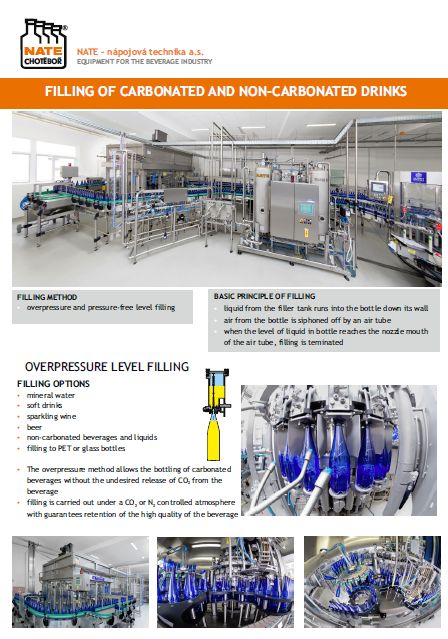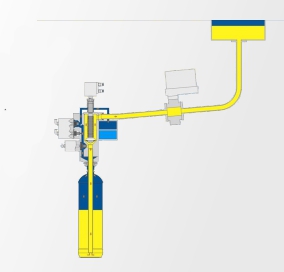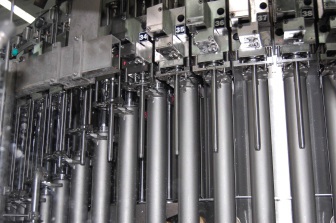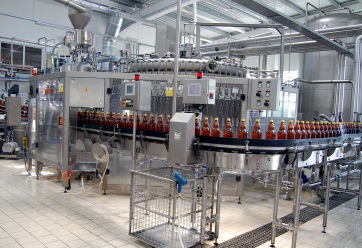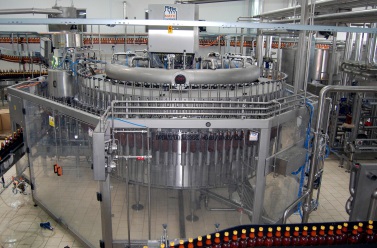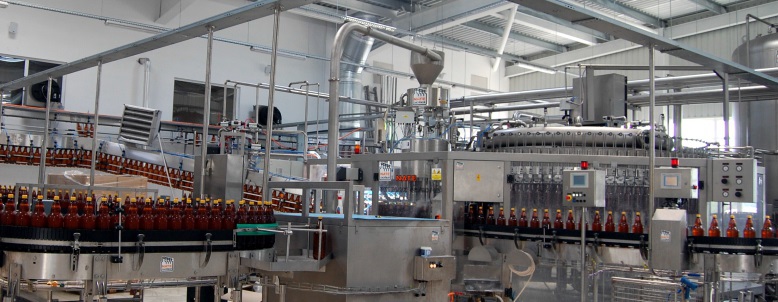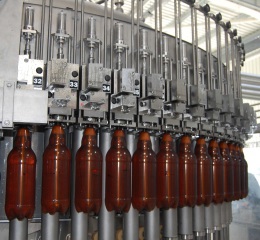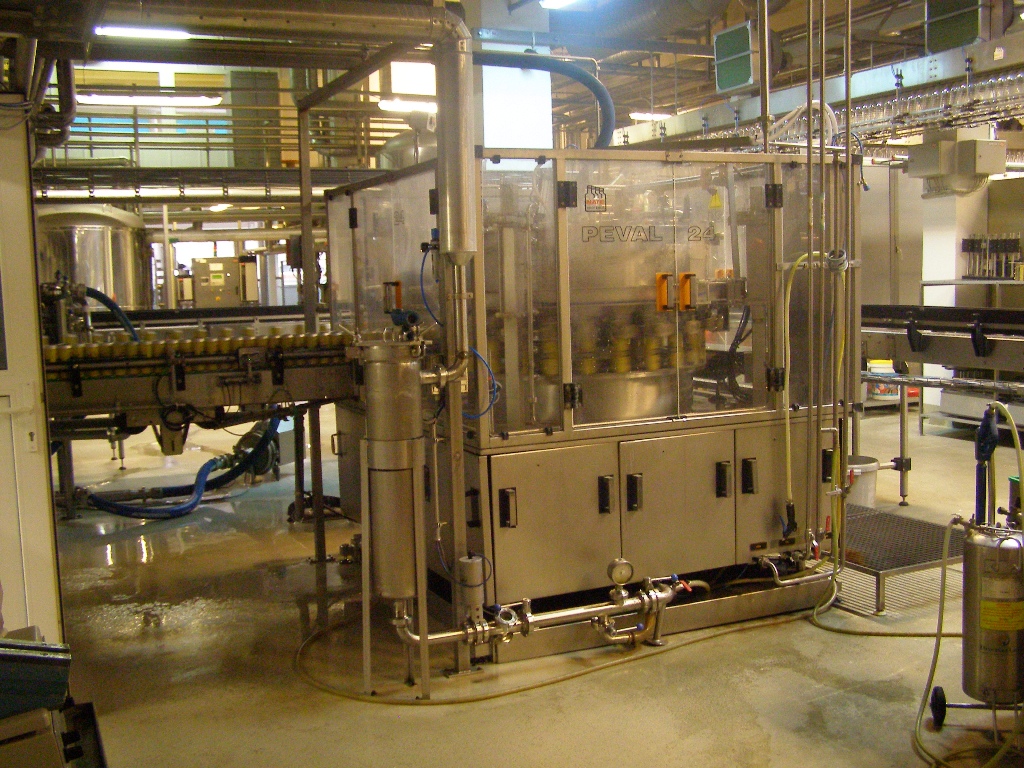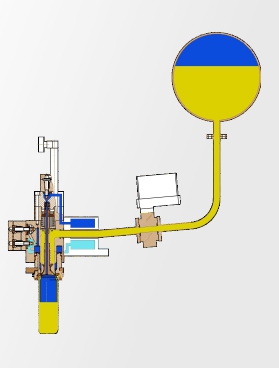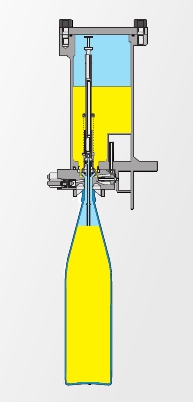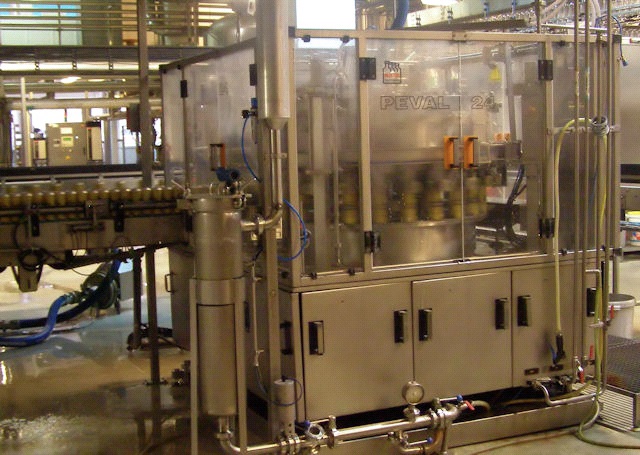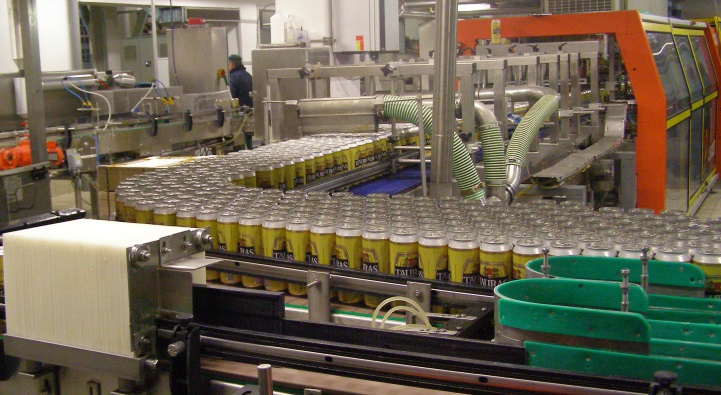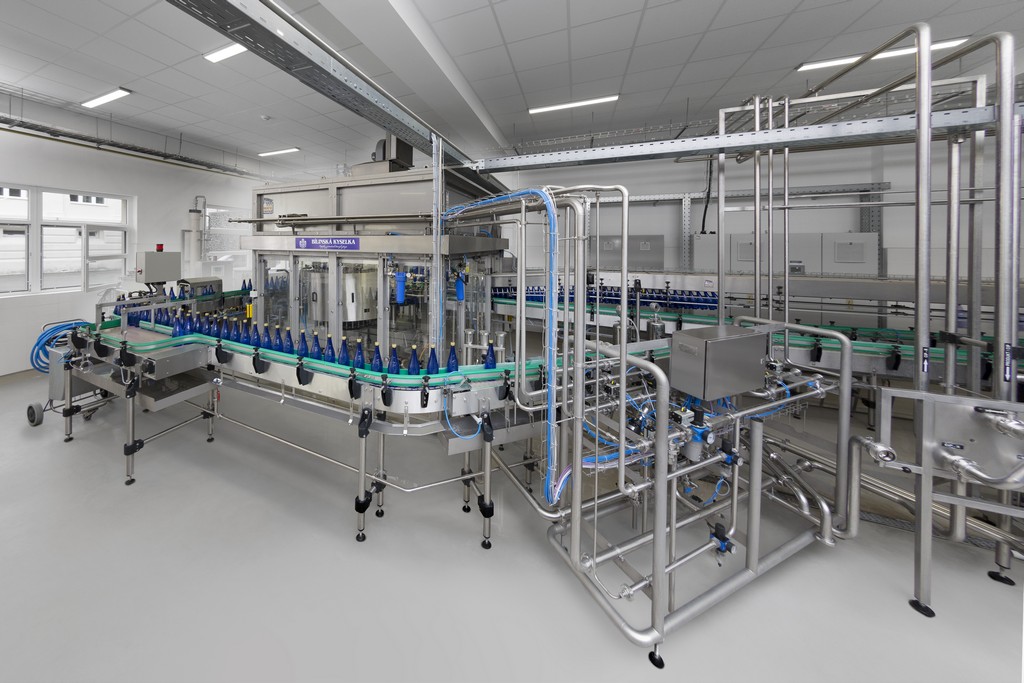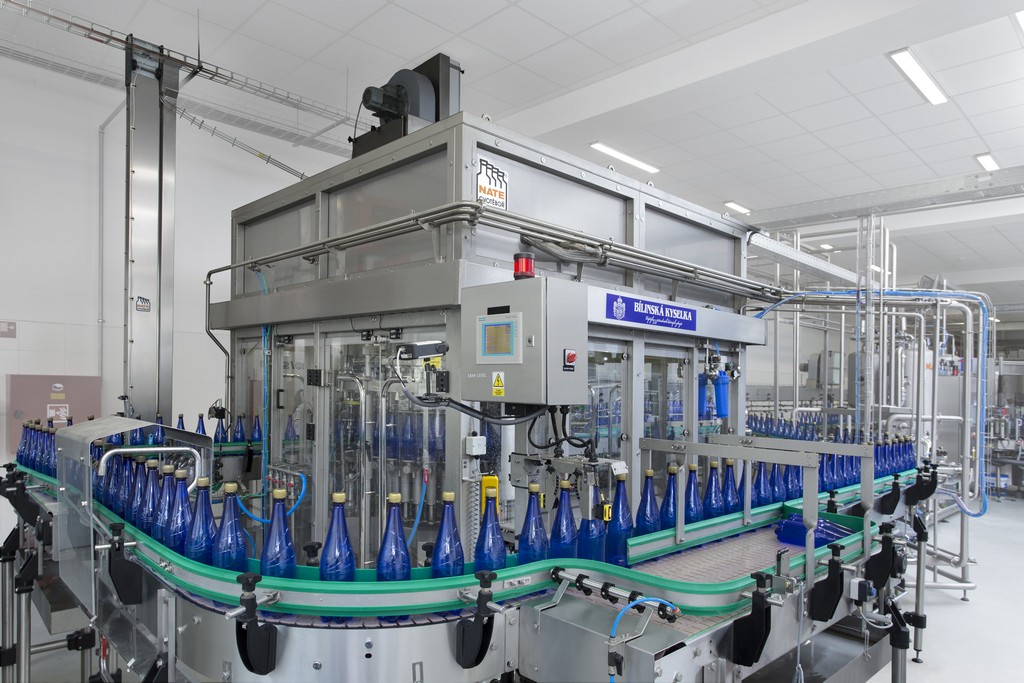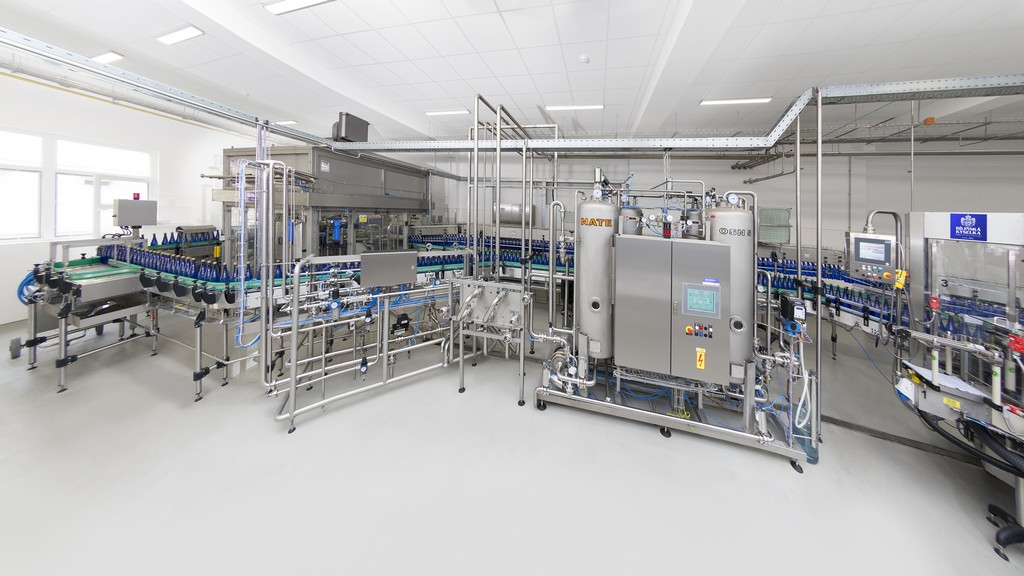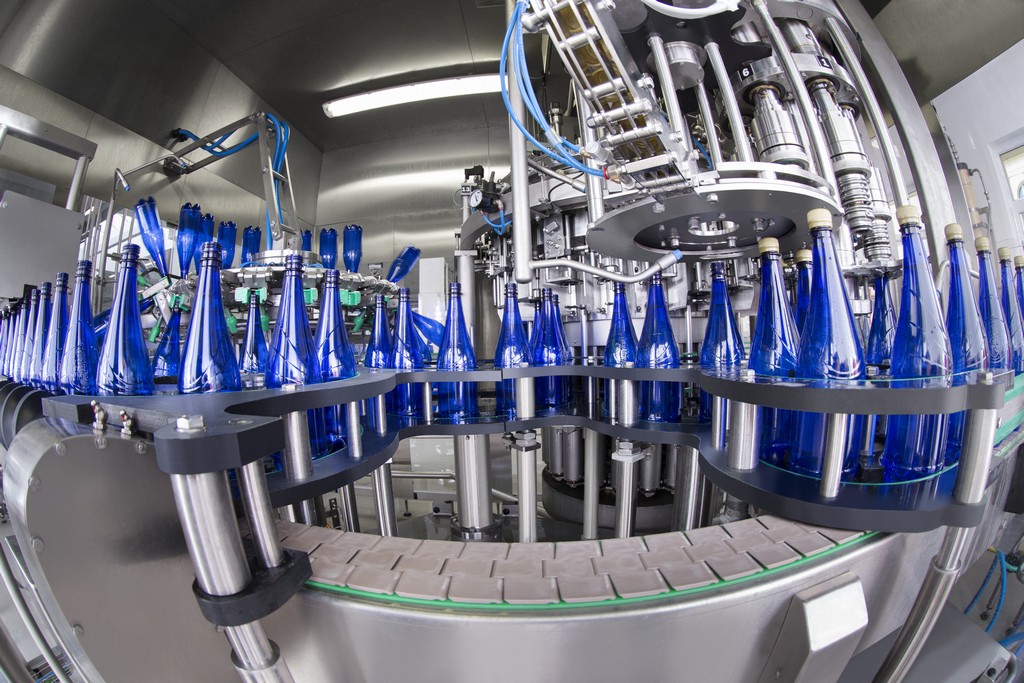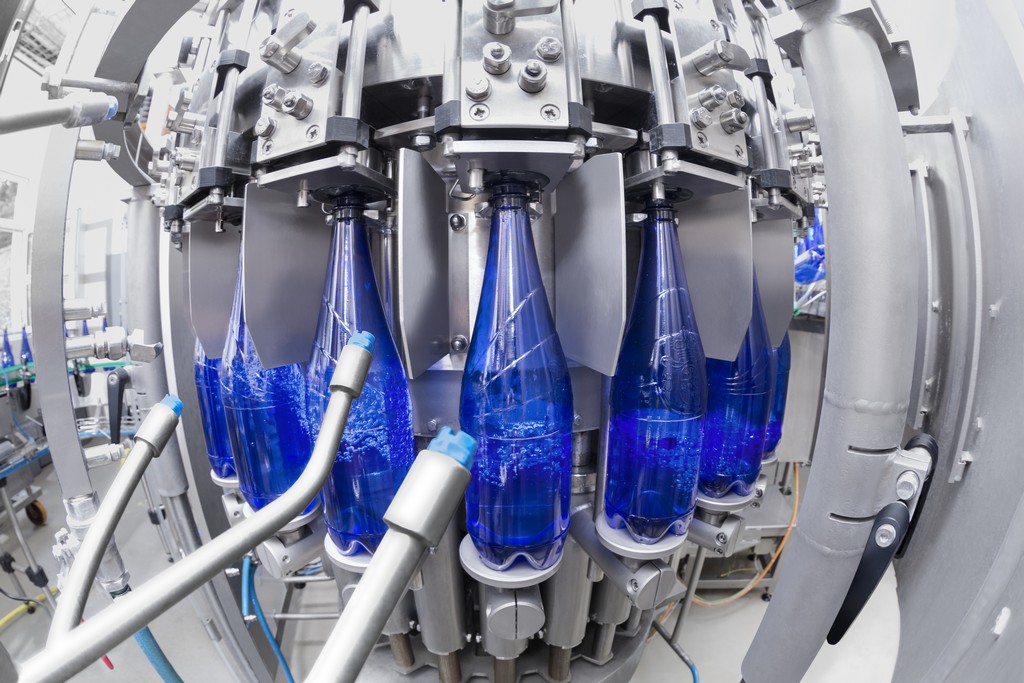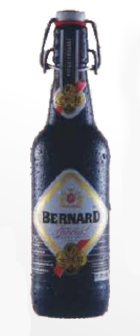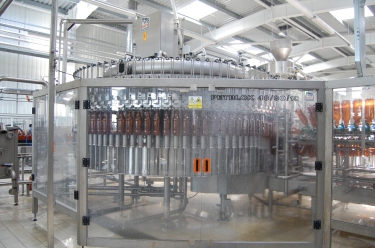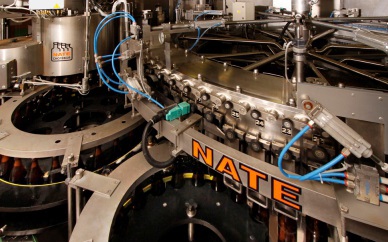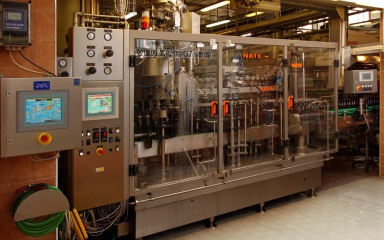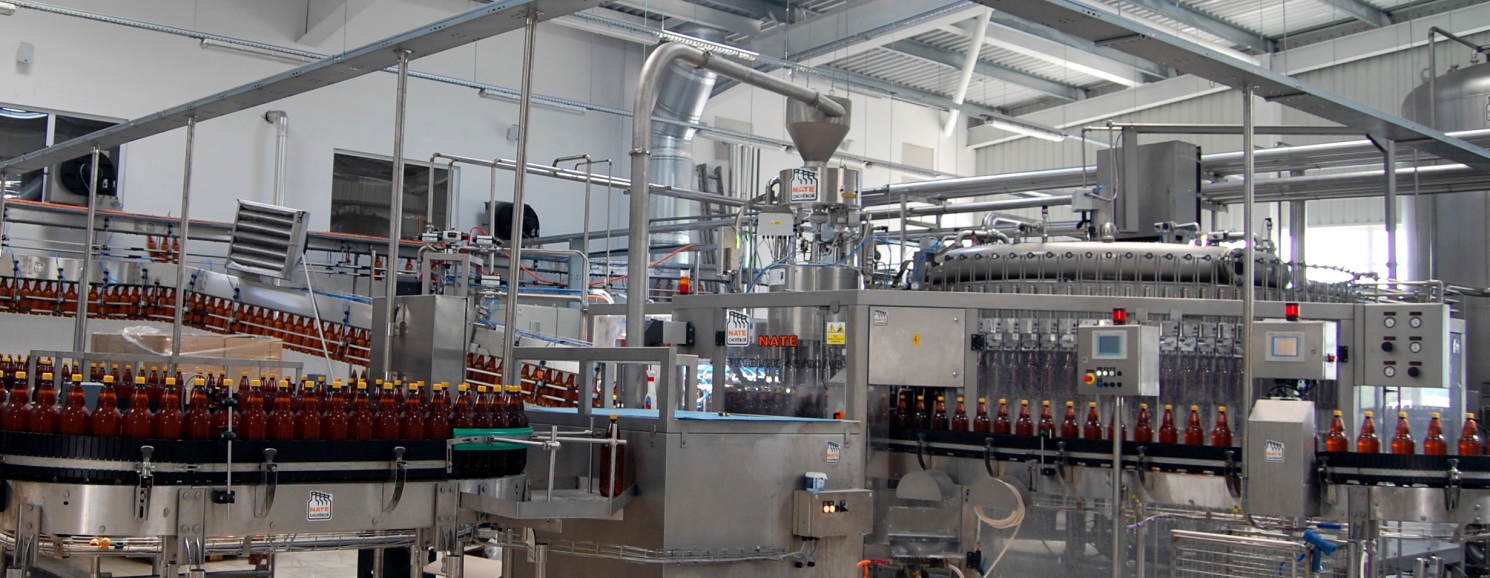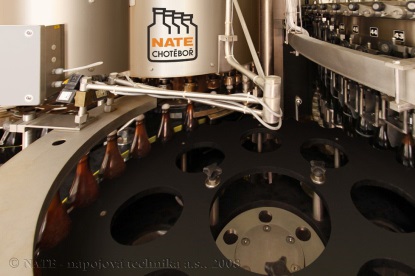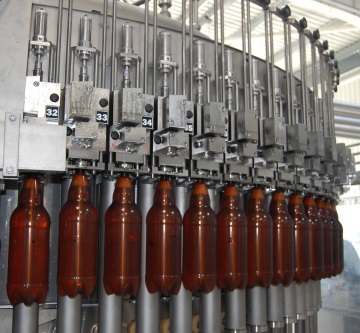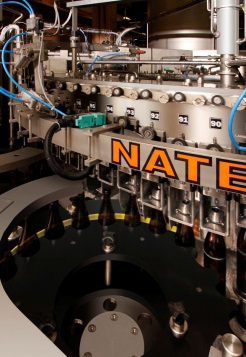
Products
Filling beer and ferment into glass and PET bottles
Filling method: Volume filling with a flow meter
Filling options:
- beer
- ferment
- filling of beverages with minimum increase O2
- filling to PET or glass bottles
The basic principles of filling:
- after pressurising the bottle, the drink flows through a tube into the valve, which is equipped with an inductive flow meter that scans the flow of liquid and transmits impulses to the valve's control system
- after recording the relevant quantity of impulses (volume), the flow meter closes the filling valve
- the liquid pours into the bottle along the walls and while the bottle is being filled, the air is removed outside of the tank space
Principle and parametres:
- speed performance about 15-20% greater thanwith the mechanical volume valve
- an increase of Oв‚‚ during bottling of up to 0,05 mg/l for PET bottles without the use of evacuation
- option of bottling beer and foamy drinks ata temperature of up to 15°C - energy saving for pasteurisation
- minimum residue of the beverage after the end of the operation
- the outflow of the air from the bottle during filling is directed to another area outside the tank
- no adjustment of the valve is required when changing the size of bottle or the volume to be filled
- the filling process is controlled from the control system of the filling machine and therefore is not dependent on the current performance of the filling machine or affected by the stopping of the machine
- possibility of automatic employment of sanitation adapters
- better sanitation of the filling valve, in comparison with the mechanical volume valve (simpler mechanical design) - the design of the fluid valve cone and the valves for evacuation, pressurisation and relese of pressure, using bellows and membrane seal
Filling of the sensitive beverages:
For filling of sensitive beverages the filler can be supplied with a casting and air filtration.
Spherical tank with a circular cross-section:
- Cylindrical design of the tank
- Utilisation of admission nozzles accelerates and improves the sanitation of the filler
- At the end of filling there remains only a minimal residue of the beverage
The Siemens SIMATIC control system:
- colour touch screen 10" terminal
- signalling of status of individual machine´s functioning and malfunctioning (code number and description of failure) on the terminal
- output and archiving of data for the monitoring and visualisation system
- remote administration and servicing through a telephone
Document to download:
|
|
Tin can fillers
Filling method: Overpressure with a flow meter
Filling options:
- beer
- carbonated water
- energy drinks
- lemonade
Basic principle of filling:
- the entry and exit of cans into/out of the filler is tangential
- the fillers are without thrust
- the filling valve slides down onto the can, the can is centred by the filling body, sealed and filled
- filling takes place under pressure and the volume is measured using an inductive flowmetre
- after the can enters the filler, the can is rinsed with CO₂ – air is led out of the tank
- pressurization of the can – after pressurization, the drink flows into a valve through a pipe, which is equipped with an inductive flow metre that scans the flow of liquid and transmits impulses to the controlling system
- after the respective volume is noted the filling valve closes
- the liquid flows into the can using a filling pipe along the walls of the can
Principle and parametres:
- filling precision: standard deviation +- 2 ml
- increase Oв‚‚ = 0,05 mg/l
- consumption of COв‚‚ : 450 g/hl for tins 0,5 l in size
The fillers may be adjusted according to requirements of the client and they may be supplemented by an additional device enabling longer preservability of the product.
It concern
- adjustment of the filler for ULTRACLEAN filling
- a device that removes foam and displaces air with carbon dioxide or another inert gas from the area under the lid just before seaming of the tin can
The SIEMENS SIMATIC control system:
- colour touch screen 10" terminal
- signalling of status of individual machineВґs functioning and malfunctioning (code number and description of failure) on the terminal
- control of the machine by means of the touch-screen terminal
- output and archiving of data for the monitoring and visualisation system
|
|
Filling carbonated and non-carbonated drinks
Filling method: Overpressure and pressure-free level filling
General principle of filling:
Liquid from the filler tank runs into the bottle down ist wall. Air from the bottle is siphoned off by an air tube. When the level of liquid in bottle reaches the nozzle mouth of the air tube, filling is teminated.
Overpressure level filling:
It is possible to fill glass and PET bottles with beer, mineral water, soft drinks, beer, sparkling wine and other carbonated beverages, as well as with non-carbonated beverages and liquids.
- The overpressure method allow the bottling of carbonated beverages without the undesired release of Co2 from the beverage
- Filling is carried out under a CO2 or N2 controlled atmosphere with guarantees retention of the high quality of the beverage
Filling to glass bottles:
- For bottling of beer, facilities are avaible with both retain the faste quality and increase the O2 in the beverage (0,03 mg/l for 0,5l glass bottle)
- Foaming - this reduces the volume of air in the space of the bottle neck (0,6 mg/l for a 0,5 l glass bottle)
Filling to PET bottles:
- The construction of a filler with support from underneath permits the filling of both glass and PET bottles on one machine
- If the requirement is only for filling PET bottles, the manipulation of bottles in the machine is carried out by a grip on the bottle neck - adjustment of the machine in the event of switching to another format of bottles is simplified in this manner
- Displacement of air from the bottle before filling is carried out by irrigation of bottle - intake of O2 during filling 0,08 mg/l for 1,5 l PET bottle
- Foaming - this reduces the volume of air in the neck space of the bottle (0,8 ml for 1,5l bottle)
Filling of cans:
- Can filler of our construction permit the filling cans and glass bottles on one machine
- Application of inert gas prior to capping
Non-pressurised level filling
Single-chamber filling:
- Filling of wine, spirits and low viscosity non-carbonated liquids
- Atmospheric pressure or a light under-pressure is maintained above the liquid in tank
Double-chamber filling:
- Filling of juices, syrups, edible oils and other non-carbonated liquids of higher viscosity
- The filler tank consists of two separated chambers, one with the liquids to be filled and another, to which the air is evacuated from the bottle during filling,where it is facilitates the filling of liquids of higher viscosity
Document to download:
|
|
Beer bottling
Principle and parametres:
- Not only the actual conditions for the filling process, but also a number of conditions preceding the filling process have a significant impact on the smoothness and problem-free process of bottling beer
- important processes already take place in the brewing, fermenting and aging of beer, when it is crucial for the beer to be well-fermented, thereby resulting in a good bond of COв‚‚ in the beer
Flow pasteurisation
- currently flow pasteurisation is most often utilised for the maintenance of a long shelf life for beer, because of savings in costs
- during this procedure beer is exposed to high thermal and pressure stress (temperature cca 72 , pressure as 16 bar)
Temperature of beer during filling:
- by default we recommend a temperature of cca 5-6°C
- its possible filling beer at temperatures up to 15°C
Minimising the increase of O2 in beer during filling:
Filling under controlled atmosphere
- in the filler tank and in the bottle during filling, CO2 is utilised as a protective gas.
- Stability of pressure in the tank is maintained by automatic regulation.
Single or double evacuation for glass bottles
- double evacuation can drain almost 99% of the air from a bottle, prior to its filling, and in this manner substantially lower the increase of oxygen during filling, on which, on a regular basis, we run at a maximum of 0,05mg/l for 0,5 l bottle.
Irrigation of PET bottles
- PET bottles cannot, due to their nature, be exposed to under-pressure.
- For drainage of air from a bottle, therefore, irrigation with gas is utilised, which maintains the pressure in tank.
- Here also we are achieving very low values, by default a maximum 0,05mg/l for 1,5 l bottle.
Foaming
- this is used for draining air from a bottleneck, after filling and before capping.
- A thin beam of hot (80°C) sterile water is utilised, with a pressure of cca 6 bar, which is sprayed in the bottle and causes foaming of the top layer of beer. For higher output two foaming jets are utilised.
- The volume of air in the bottleneck space after foaming, on a general basis amounts to a maximum of 0,6 ml (0,5l glass bottle) or 0,8 ml (1,5 l PET bottle).
Filling of beer in glass ant PET bottles:
Overpressure level filling - suitable mainly when, from the process are required:
- Mechanical control of the valve
- Simpler servicing
- Lower and medium-level output
- Filling of glass containers - PET also possible
- A small number of bottle formats
Volumetric filling with flow meters - suitable mainly when, forem the process are required:
- Min. increase of O2 during bottling
- Electronic control of the valve
- Monitoring of individual valves (filled volume, individual steps of filling etc.
- Filling of various kinds of beer with different requirements for the filling process - speed of filling, single-or double- release of pressure etc.
- During filling of PET bottles - reqquirement that pressure change should not affect the filled volume
- Higher output
- Option of bottling beer at temepratures up to 15°C.
Cleanliness of the environment at the place of filling:
- For filling of beer, in regard the conditions of the operation and in accordance with the customer's requirements, we supply fillers in designs from the standard Klasik to Ultraclean,
Losses of beer during filling:
- Type of beer
- Foaming method
- Size bottles and bottle inlet
Basic principles of filling:
- The entire fulfilment of the provision of a high quality of bottled beer also requires the condition of the totally guaranteed cleanliness of the filler, which our machines observe.
Inner and outer cleanlininess of the filler:
- combines steps for cleaning with cold water, hot water, a hot lye solution, an acid solution and another cleaning media. The components used are unaffected by the brief steaming of the machine.
- In the production plant, by default we set up a schedule of individual steps of CIP, which can then be modified on the basis of individual requirements for specific operations.
- Is provided by a system of rinsing and foaming, not only of the valves and the entire processing area (distributors, capping heads etc.), but if needed also of the casing of the filler. For preservation of the cleanliness of the filling parts during the operation we include irrigation of the valves.
Example of solution:
- Brewery PRIMГЃTOR a.s., RakovnГk, Czech republic - VERAL 66 PKE
- IM BEERMASTER SA, Moldavia - PETBLOK 24/32/6
- JSC Georgian Beer Company, Georgia - VERAL 50/10
- OAO „Závod pivovarennyj Moršanskij” - VERABLOK 50/50/10, Russia
- OAO „BULGARPIVO Nabryeznye Chelny”, Russia - PETBLOK 24/24/6
- DE JSC „Obolon” - „Zibert´s Brewery”, Fastiv, Ukraine - PETBLOK 48/90/10
- ZAO „Korsakovskij závod piva i napitkov”, „Severnaja zvezda” - Nord Star, Sachalin, Russia - PETBLOK 24/36/6 ULTRACLEAN
- JSC Georgian Beer Company, Georgia - PETBLOK 48/80/10
|
|
TO ASK OR ADVICE?
Do not hesitate to contact us


